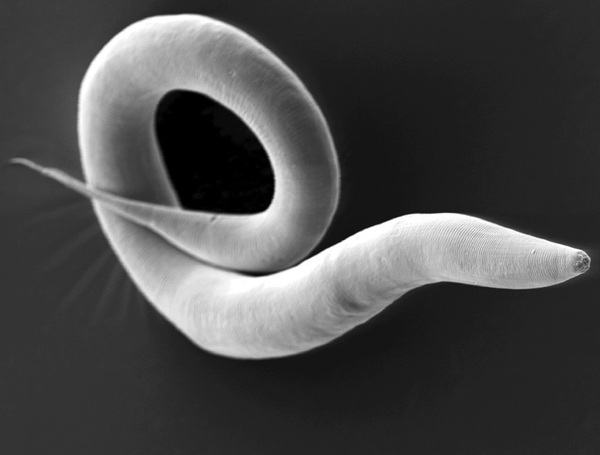Impact of daf-25 and daf-11 Mutations on Olfactory Function in C. elegans
(1) Wheeler High School, Marietta, Geoegia
https://doi.org/10.59720/18-034
A plethora of life-threatening diseases found within humans are thought to result from malformed cilia. The genetic origins of such malformations can be analyzed by testing genes within C. elegans that are similar to human cilial genes. In C. elegans, chemotaxis and movement toward food are enabled by cilia. Wild-type C. elegans were expected to gravitate towards butanone, 2,3-pentanedione, and diacetyl, due to their association with to food, but were expected to move away from 2-nonanone. Chemotaxis assays were used to determine whether mutations in the cilia of two additional strains of nematodes (daf-11 and daf-25 mutant C. elegans) would alter the chemotaxis indices for these four odorants. Each of the three strains of C. elegans were placed on plates with sodium azide and one of the four odorants on either side. Both mutant strains were expected to display difficulty in making an association between the odorants and food due to their malformed cilia; however, we hypothesized that the daf-25 mutants would be less effective at chemotaxis than the daf-11 mutants. Our findings partially support this hypothesis. The wild-type C. elegans sensed and moved towards the odorants as expected more so than both of the mutant worms, and generally the daf-11 mutant nematodes appeared to sense and move towards stimulants better than the daf-25 mutants. There was no statistically significant difference between the senses of the two mutant strains while in the presence of this odorant.
This article has been tagged with: